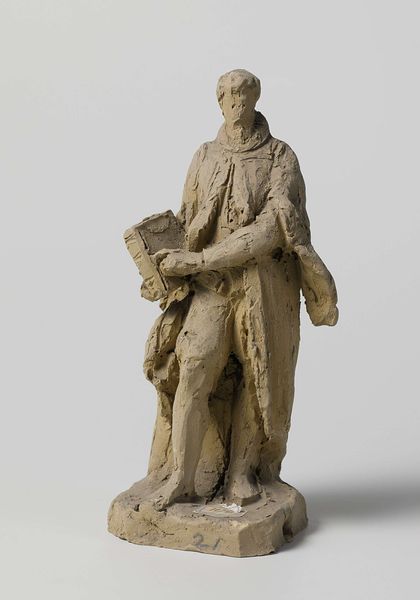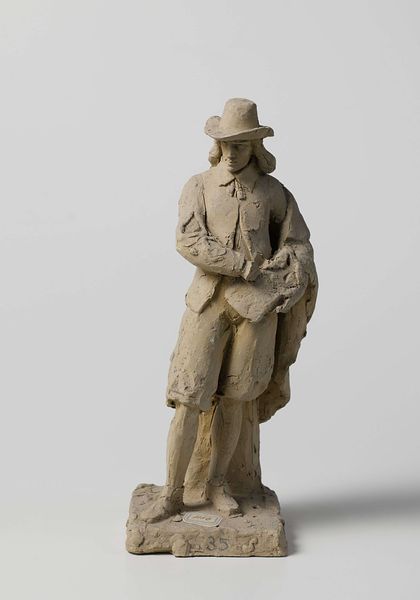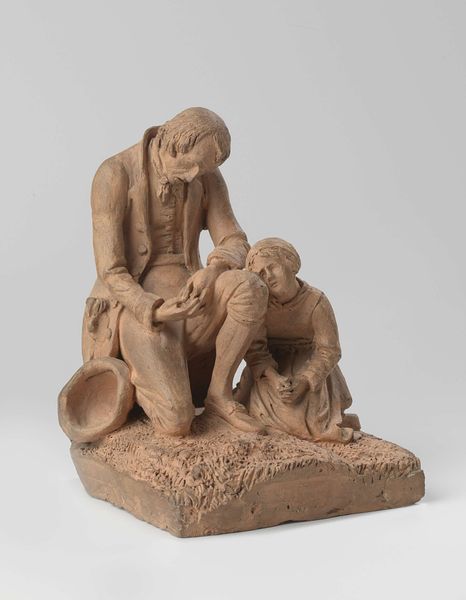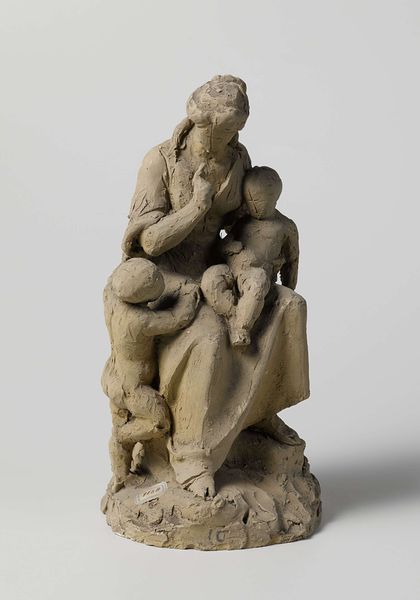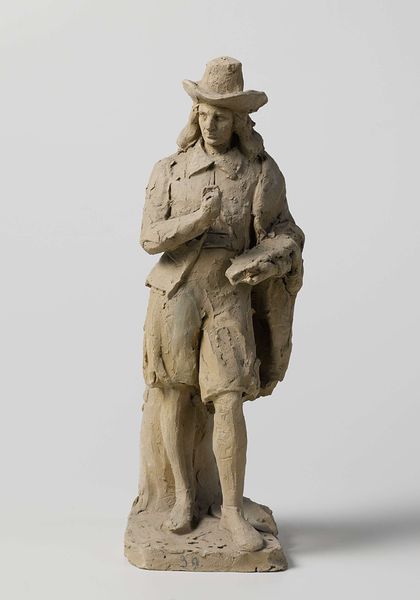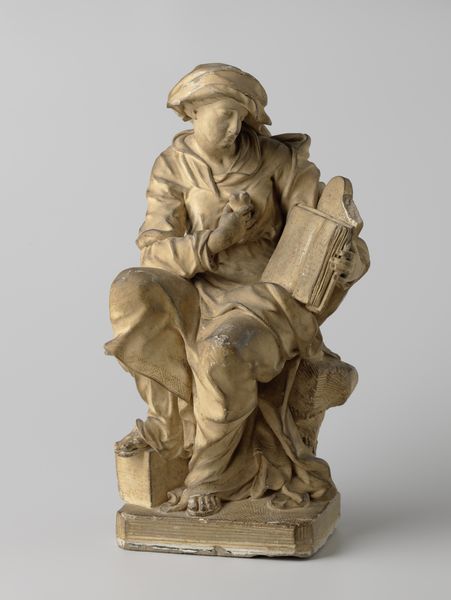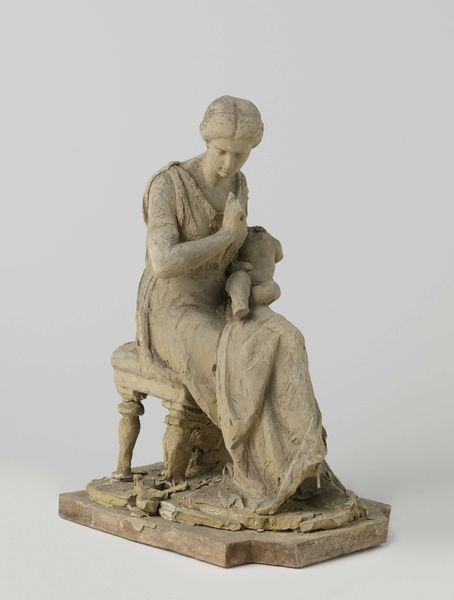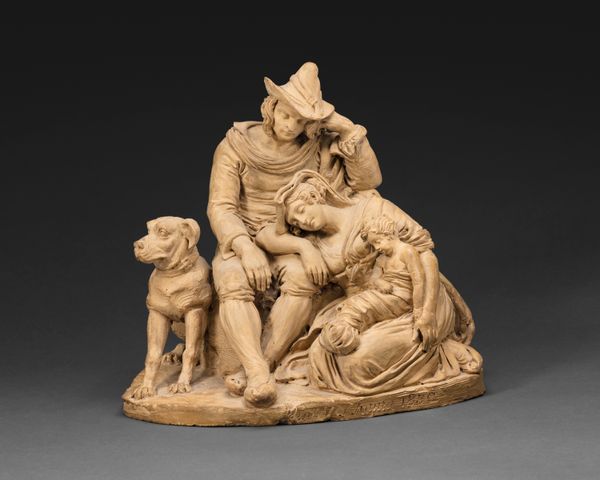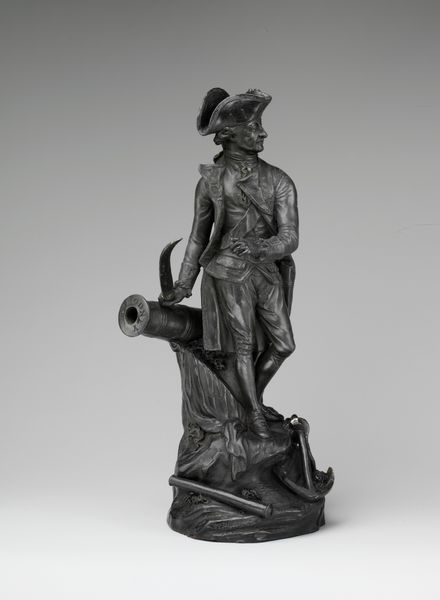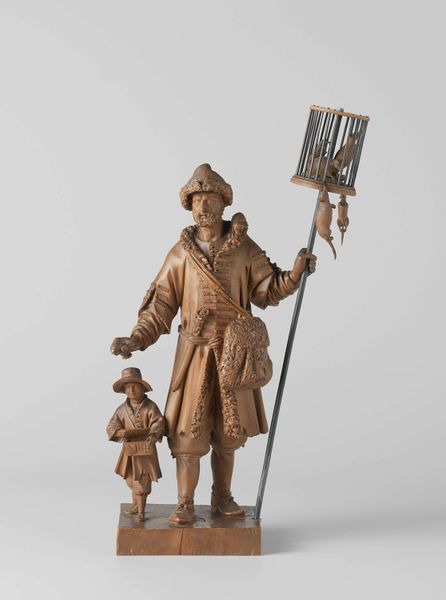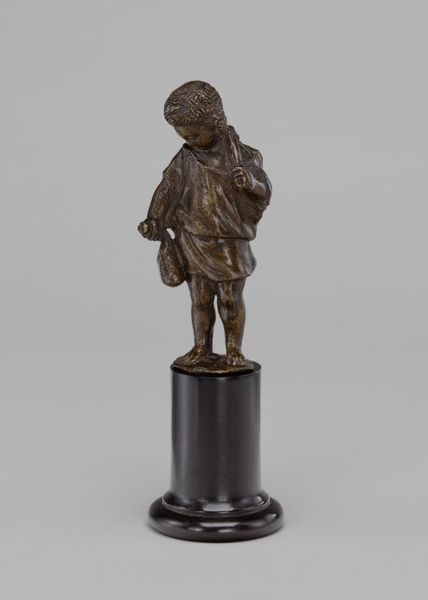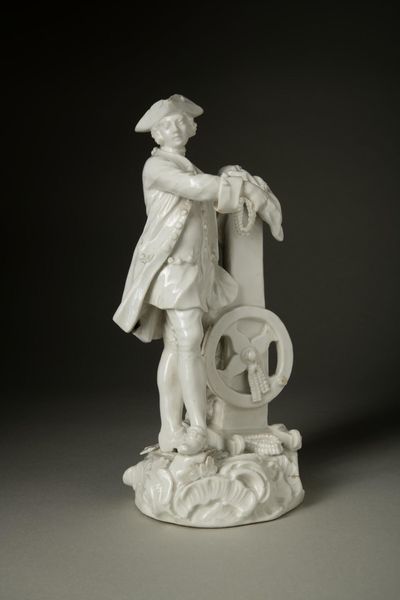
sculpture, wood
#
sculpture
#
sculpture
#
romanticism
#
wood
#
genre-painting
#
history-painting
#
realism
#
statue
Dimensions: 13.9 cm (height) x 6.8 cm (width) x 6.7 cm (depth) (Netto)
Curator: Here we have a wooden sculpture dating from the 1840s by J.A. Jerichau, titled “The German painter William Bottomley with his dog”. Editor: It's quite charming, though almost monochromatic. The dog, particularly, lends an air of gentle companionship to the figure, who seems deeply engrossed in a book. Curator: The texture of the wood certainly contributes to the overall feeling. Notice how Jerichau has meticulously rendered the folds of the man’s clothing, the fur of the dog, and the distinct planes of his face. It’s a careful balance of detail and overall form. Editor: I find it interesting that the sculpture focuses on William Bottomley. A study of artists and their relationship to society and class at that time may lend valuable insight into how artistic endeavors were regarded, and the networks in which they operated. Also the intimacy of this scene normalizes the painter with his cute dog. Was the painter more widely recognized back then or now? I'm eager to investigate further the racial undertones of his status as a "German painter". Curator: I would say that's going outside the intended representation here; to start layering a study about "racial undertones" onto this subject veers dramatically away from what’s structurally available in the image itself. Rather, what draws the eye is the pyramidal composition, the base widening towards the seated figure, with the dog almost perfectly mimicking the angle of his leg. It establishes an incredible stability. Editor: I still believe we cannot isolate this piece from the broader societal discourses. Artists and their companions are inevitably shaped by the social currents they inhabit. A close study will always serve any analysis of an artwork such as this. Curator: Perhaps, but appreciating its technical mastery and carefully constructed equilibrium doesn't require it to also be read as an example of social hierarchy! Editor: Indeed. Still, for me, the power of this lies in the potential to illuminate lives of creatives within the scope of larger conversations surrounding the human-animal connection as well as identity and representation in the mid-19th century. Curator: And for me, it's about how Jerichau achieved such incredible three-dimensionality with so few colors. Editor: A valid point! I suppose it's this multifaceted aspect of the artwork that is the beauty.
Comments
No comments
Be the first to comment and join the conversation on the ultimate creative platform.
